by Bill Murray
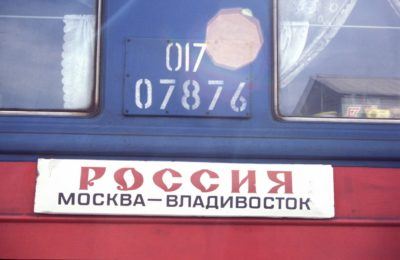
Larger than life writers always have that one extra experience, the one that puts your trip to shame. Lawrence Ferlinghetti did when, having achieved the Russian east coast via the Trans-Siberian railroad, he was ordered clear back across the continent because of paperwork. His calamity leaves most of us with nothing to say about our own, more ordinary trips.
If you want to write about the world, you still have to do the trips. You have to see for yourself what better writers were describing. You have to go, so you see how they say what they say.
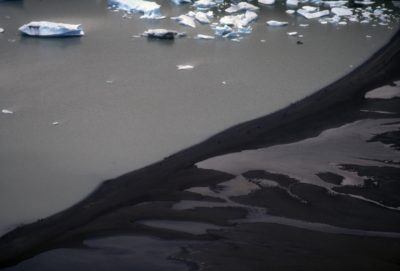
Doing trips yourself is a way to stretch a little, to stand in the great explorer’s footsteps. You need to go to a few ends of the earth. Throw rocks in the Straits of Magellan. Stand and consider how odd it is that the nearly Antarctic tip of South America came to be known as Tierra del Fuego, the land of fire. Imagine being as far from home as Ferdinand Magellan and his crew, sailing to a place no European had ever seen and spotting huge bonfires onshore, where tribes called Yaghan and Ona kept fires constantly stoked for warmth.
The Yaghan wore only the scantest clothing. They smeared seal fat over their bodies to fend off the wind and rain and cold. Canoeists adept at navigating the straits’ channels and tributaries, they hunted the sea. Three centuries after Magellan, Charles Darwin wrote of the same people “going about naked and barefoot on the snow.”
The Ona lived across the strait. The books call them fierce warriors who adorned themselves with necklaces of bone, shell and tendon, and who, wearing heavy furs and leather shoes, intimidated the bare-skinned Yaghan. Darwin called them “wretched lords of this wretched land.”
An early European settler described life down there as 65 unpleasant days per year complimented by 300 days of rain and storms. If I’d written a quote so succinct, I might just put down my pen right now.
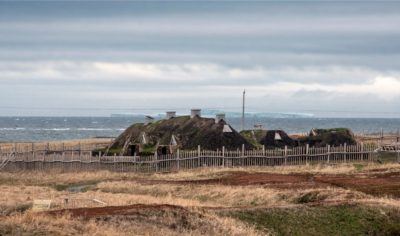
At the hemisphere’s other extremity, on the northern tip of Newfoundland, you can stand on the spot where Leif Erickson’s group established a European toehold in North America. You look around, you pull up your parka and you confound yourself wondering how they possibly did it, half a millennium earlier even than Magellan.
Leif’s brother Thorvald led ashore a crew of thirty using Leif’s ship (Leif having stayed back in Greenland upon his father’s death). They found the camp Leif had established the year before and soon after they found the “skrælings,” local people unlike the Inuit in Greenland. Native Americans, “short in height with threatening features and tangled hair on their heads.”
One day Thorvald’s men came upon nine skrælings sheltering under upside-down skin boats and killed all but one. The next morning an armada of canoes advanced from the sea, and Thorvald cried: “We will put out the battle-skreen and defend ourselves as well as we can.”
The explorer’s men withstood the skrælings’ attack unharmed except, calamitously, for Thorvald: in the legend, he wailed, “I have gotten a wound under the arm, for an arrow fled between the edge of the ship and the shield, in under my arm, and here is the arrow, and it will prove a mortal wound to me.”
The next time you’re bleeding out, imagine yourself exclaiming “it will prove a mortal wound to me.” The most erudite Thorvald Eiriksson became the first European buried in the New World and, dispirited, the Greenlanders soon departed for home.
•••••
Since few writers are among the world’s great explorers, we look for shortcuts. Here are four:
– Go places that are frightening, places that hold the narrative promise of a horror movie. This is the daily work of war correspondents, but short of that, you can plant yourself somewhere that scares you and tell its story. It was Ryszard Kapusinski’s entire career.
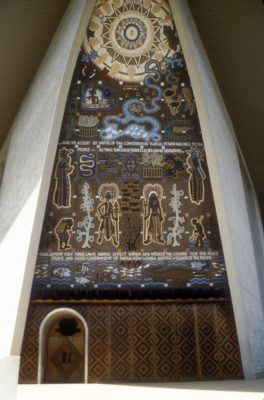
Tim Butcher’s book following Graham Greene through Liberia scared me. So did my own trip to Port Moresby, the Papua New Guinean capital, a city riven, debilitated then and now by crime, despair and pointless violence. Port Moresby is the only capital city in the world not connected to anywhere else in particular by road. Port Moresby swelters alone.
The Germans, Dutch and Australians colonized the coasts of PNG, but they all assumed there was negligible value inland, over the hills, until the 1930s, when a group of Aussies disappeared over the rim and emerged with eyes wide as saucers and incredible stories of cannibalism and fantastic wildlife.
We flew from Port Moresby into the highlands to see about that for ourselves, and that story is told elsewhere on 3QD.
– Visit borders. These can be rich with material, places where central rule frays, or even invites disdain, areas in a cultural stew with neighboring lands, places where multiple traditions and overlapping sets of rules apply.
The Soviets drew borders specifically to splinter ethnic groups’ power. Contemporary China’s Tibetan and Uyghur regions and the rich tribal mix on Yunnan’s southern frontier illustrate the Chinese proverb: shan gao huangdi yuan, the mountains are high and the emperor is far away.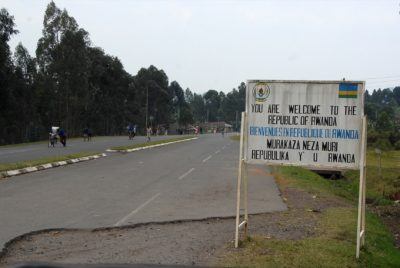
The Democratic Republic of Congo, where Kinshasa’s rule doesn’t extent much beyond, well, Kinshasa, has hinterlands full of stories. See Conrad and Naipaul from the colonial era, of course, and from the last few years read Michela Wrong, Helen Winternitz, and Mike Martin, Chloe Baker and Charlie Hatch-Barnwell’s approximately impossible sorth-nouth crossing of the Congo River Basin, from Kinshasa to South Sudan.
– Go places people don’t understand. These offer no prospect of merit in themselves, but at least they haven’t been over-described. A burst of early twentieth century exploration of the Balkans yielded a rich vein of literature from the likes of Rebecca West, Patrick Leigh Fermor and Olivia Manning. The region went quiet under Tito, until there came a full-on invasion of young writers who narrowly missed the Soviet collapse and determined not to miss the Yugoslav one.
Such was the wealth of post-Tito Balkan literature that I came to feel I knew Mostar and its bridge, Srebrenica and its atrocity, and Sarajevo’s airport tunnel before I arrived in Sarajevo in 1997, a few years after the war. This came in strong contrast to a 1993 visit to Albania. Nobody knew anything about Albania. It was Europe’s own little North Korea.
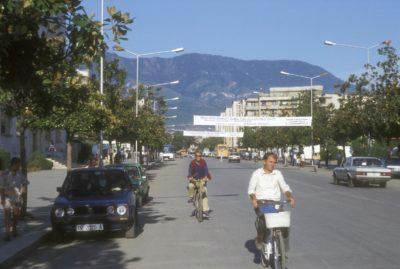
Time blurs our memory of what an isolated, eccentric, apostate state Albania was, a place where “Everything had to be ‘revolutionary,’” our Albanian guides said. “So when we were at school we had to go through what they called the revolutionary triangle. That was learning, literary training and physical labor.”
We asked about the physical labor part.
“Anything. We could go help build a building, we could do farming. Once they were building the martyrs’ cemetery. We had to carry some marble blocks and it was January and February. It was cold on top of the hill. It was terrible.” A rueful chuckle. “Also I have taken part in so many railway construction sites.”
We lingered that night over dinner in downtown Tiranë, told stories, laughed and drank raki, the Balkan brandy distilled from grapes and anise. Our friends knew the Albanian soccer coach at the next table, who’d brought the referee for tomorrow’s game with the Danes. Not a bad idea.

When it came time to leave Albania we turned up at the sea terminal in the decrepit town of Durres, where dozens and dozens of diminutive concrete slab bunkers, installed under the dictator-for-life Enver Hoxha, rose like mushrooms, right down onto the beach.
Guards outside a chain link fence admonished “Watch your things in there.” Nothing indicated what we might do but walk with the flow, dodging Bulgarian heavy trucks that threw muck up from potholes.
I held a brochure from the Adriatica Line. When the top of a ship with the brochure’s color scheme came into view, we stood in a queue. Twenty minutes and no one moved, so we made for uniformed men at a car and truck gate. They spoke Italian and German and we didn’t, but some random Albanian who didn’t speak any of it mediated, the gate wheeled back and we marched proudly forward to a bureaucrat’s table. Here, heads shook. It was not possible. Something about a slip of paper we should have gotten at Tiranë airport.
I like to think that in the end our non-retreat wore ‘em down. We had nowhere to go, we couldn’t even plead our case, so we just stood there. Eventually we got the requisite stamps and a nod to move nearer the ship. Ahead was a final queue up the ramp into the M/v Expresso Grecia.
We shuffled fitfully. The last line of Italian defense examined Albanian papers. By now it was sailing time. An imperious fellow at the top of the ramp declared our papers not in order. We would have to go back to Albania. Adriatica, it seems, kept the passenger manifest in a building we didn’t know about.
I found the building and went inside. A monster thundered at me to march right back out and come around to the window. Where she typed our names on the passenger manifest, glared, and thrust at me two long pink strips of paper. I scowled back, snatched them, and did a gleeful little scamper back to the ship. Finally, as darkness closed around the unlit harbor, we eased away in the direction of the war-racked Dalmatian coast of former Yugoslavia.
– Visit places where few others turn up. If no one has been where you’re going, no one expects what you’ll see. Few travel by cargo ship for example, about which Gregory Jaynes wrote an entertaining book, the whole point of which was that nothing happened. Xavier de Maistre wrote a pandemic-perfect travel journal of sorts, an account of being confined to one room for six weeks titled A Journey Around My Room.
I’m thinking of the time we set out for Asuncion, Paraguay from Argentina, starting at the Triple Borders, where Argentina, Brazil and Paraguay meet. A man named Walter drove us over to the Brazilian side of Iguazu Falls, across the River Parana. On the strength of Walter vouching that we’d be back in Argentina today, that didn’t require a border stop.
But really, we were driving straight through a tiny snip of Brazil for Paraguay. Walter warned we might lose our cameras if we took pictures at the Paraguayan border, but just-delivered boxed chicken dinners interested the border police more than we did. It only took about three minutes.
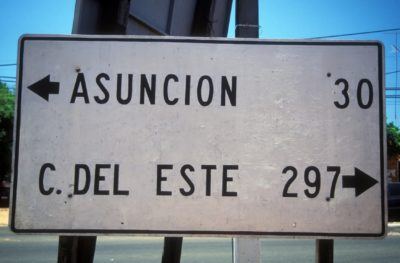 Disappointing, exhausted Cuidad del Este, Paraguay’s East City, squatted in the sun before us, poor and dusty and ramshackle, low buildings crumbling into lumps along the highway, traffic lights out, money changers in leather money belts glowering from the side of the road. Walter stopped, didn’t like the rate, then stopped again and did a deal at the Esso for fifty Argentina pesos worth of Guarani. Gas money.
Disappointing, exhausted Cuidad del Este, Paraguay’s East City, squatted in the sun before us, poor and dusty and ramshackle, low buildings crumbling into lumps along the highway, traffic lights out, money changers in leather money belts glowering from the side of the road. Walter stopped, didn’t like the rate, then stopped again and did a deal at the Esso for fifty Argentina pesos worth of Guarani. Gas money.
In Cuidad del Este you long to be in the country again. A John Deere heavy equipment store, red dirt, no landscape, litter. You’d think there was a competition to see how foul they could make the roadside. Men with guns sat on stools. On the other side of town they’d torn up the road and didn’t appear to have plans to fix it.
The caballeros barracks was the nicest building in Cuidad del Este. If you were a young man such a place, with its crisp-pressed, uniformed soldiers, must have had its enticements.
We and others double-passed some of the slower cars on the two lane westbound highway which, if nothing else superlative can be said, was in tolerably good shape all the way to Asuncion. Pavement good enough to speed.
Somewhere a road wandered off to the left. A sign with an arrow read “Novotel 247K.”
